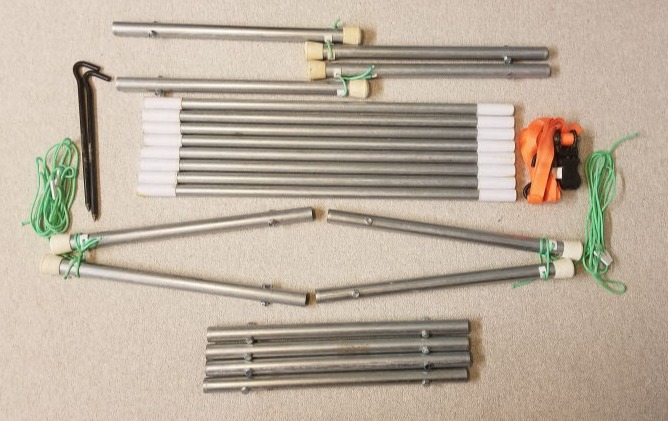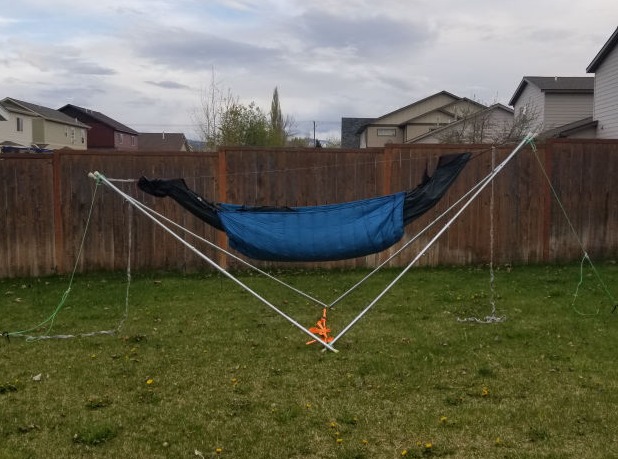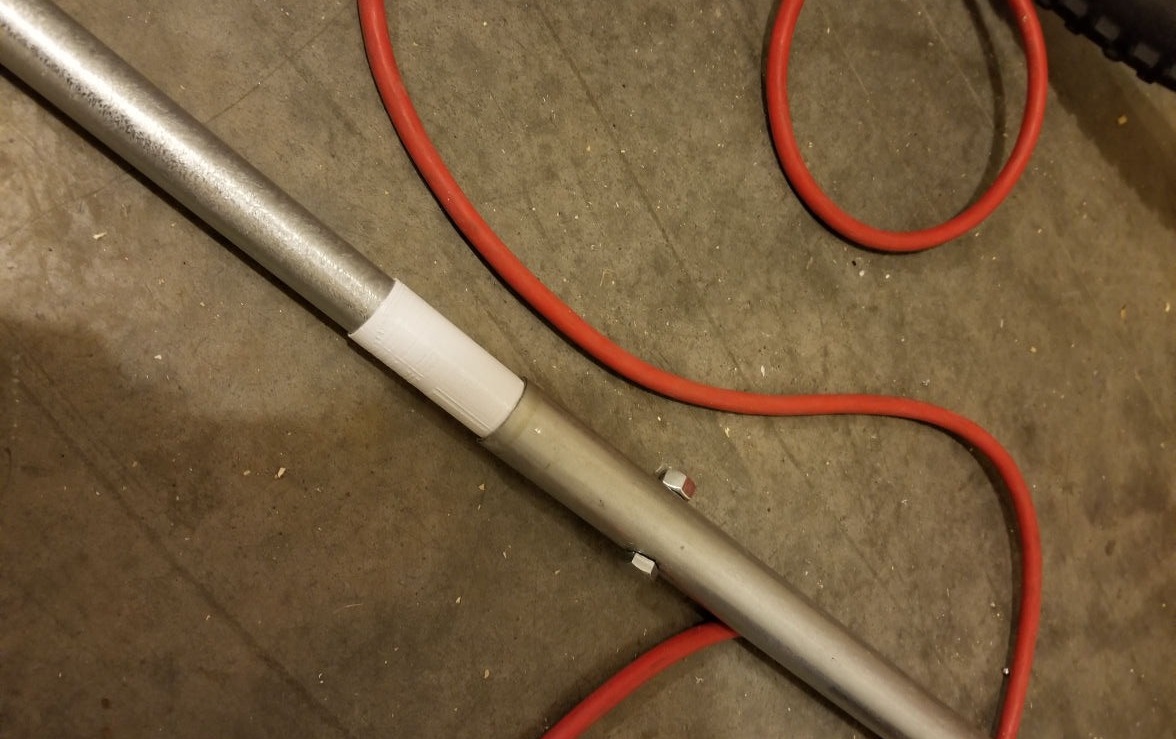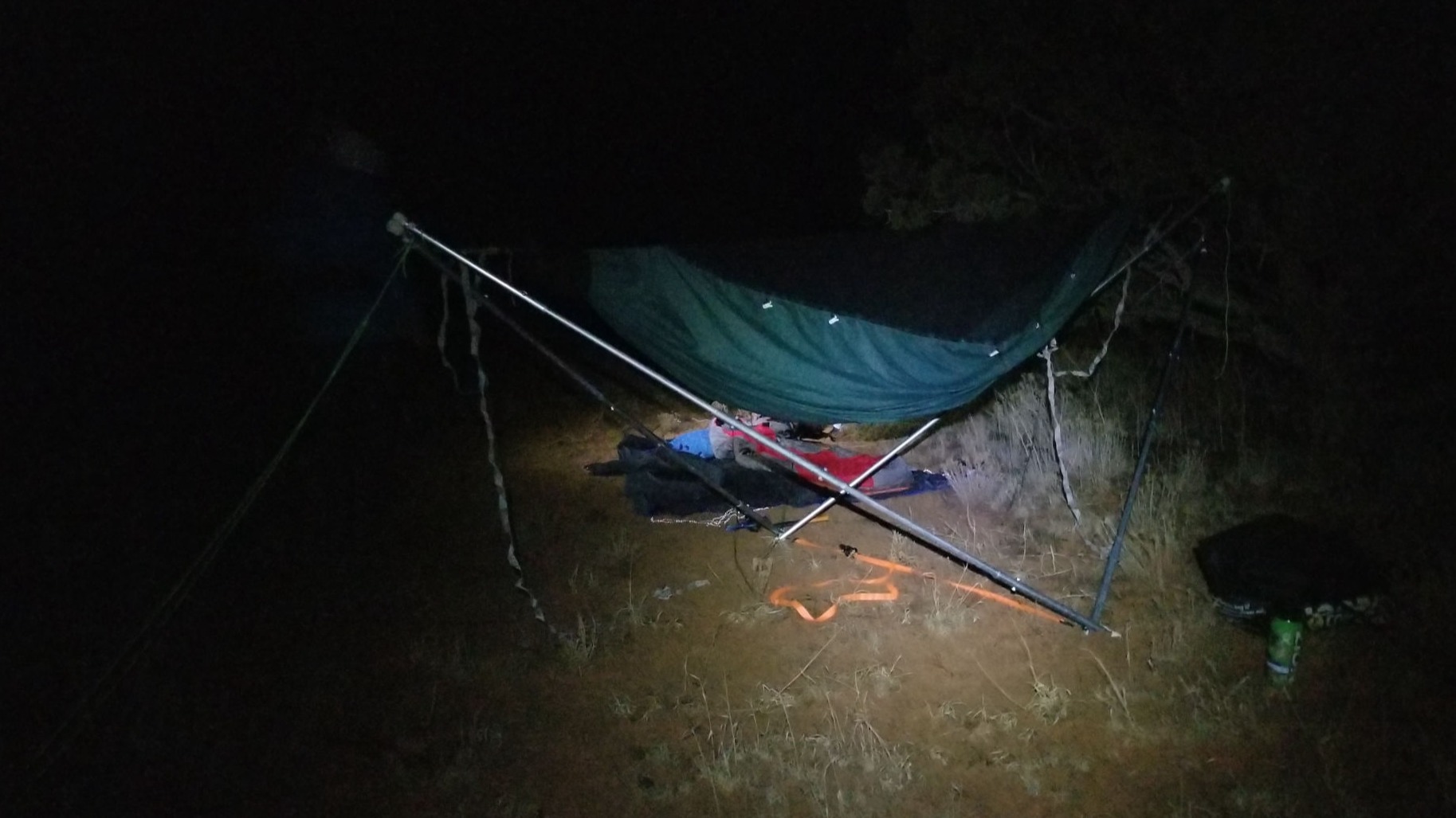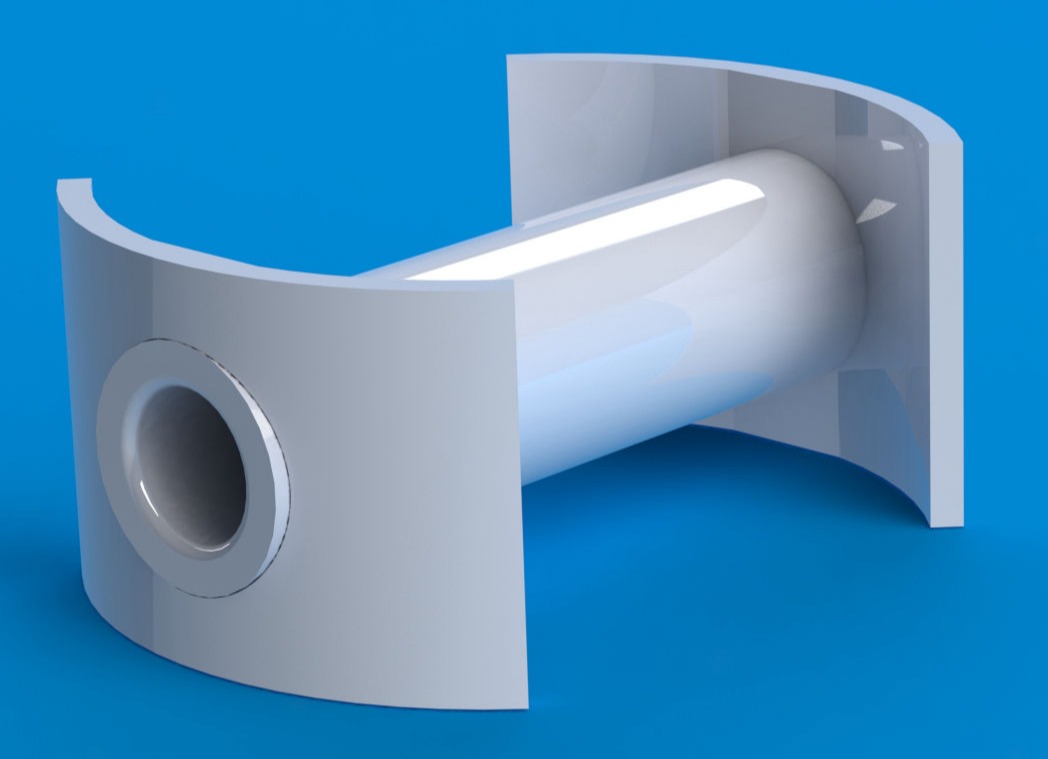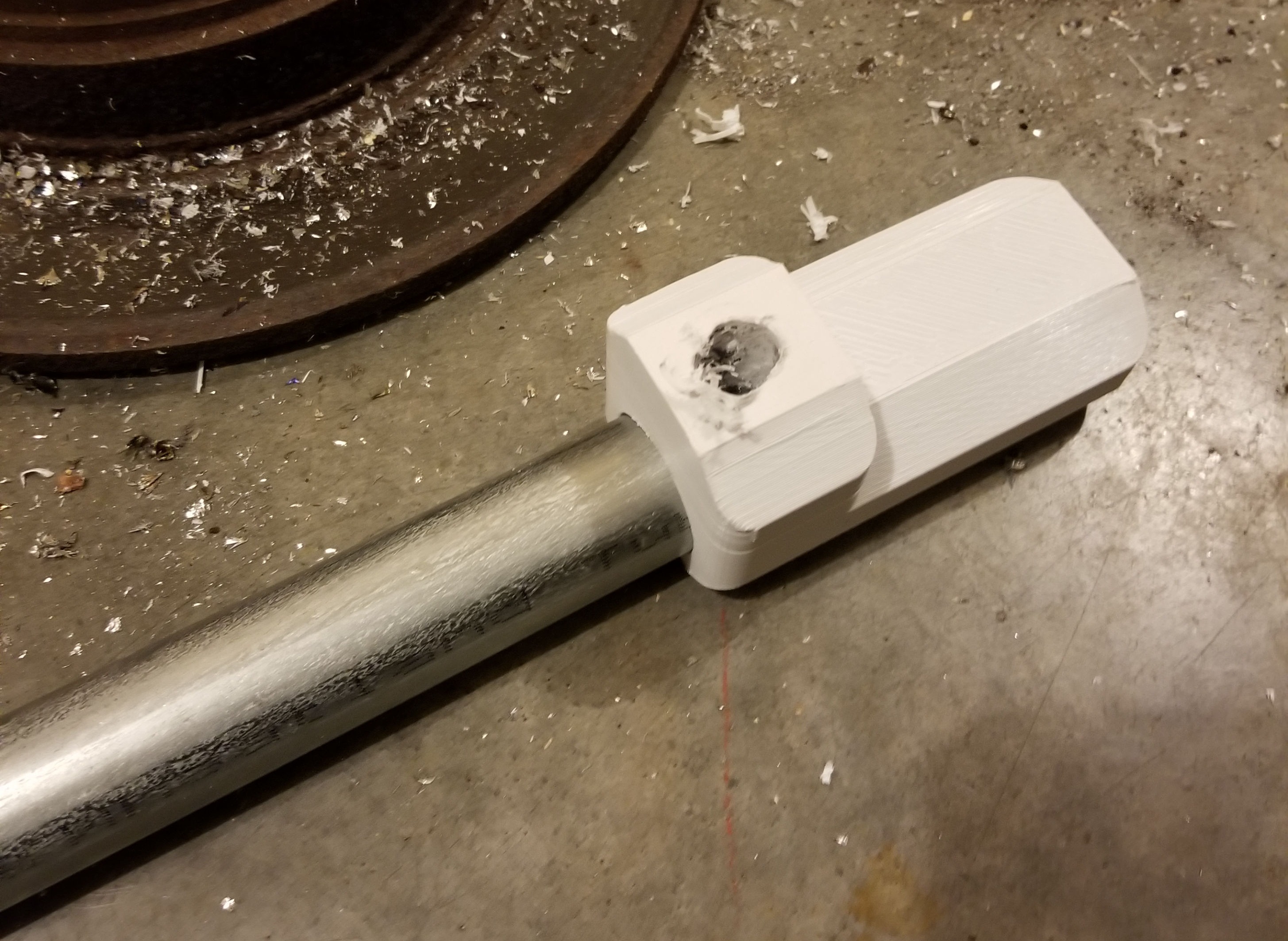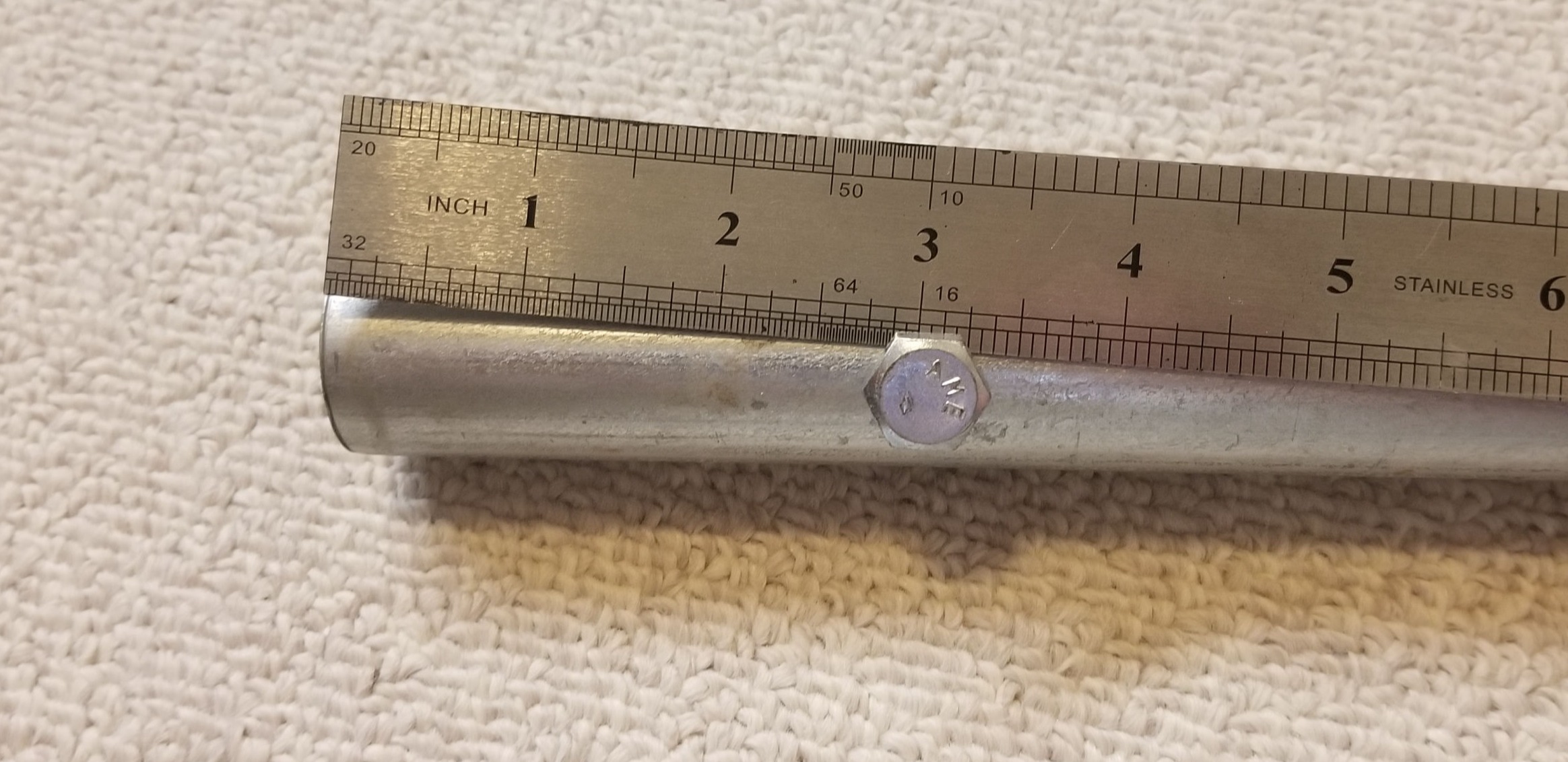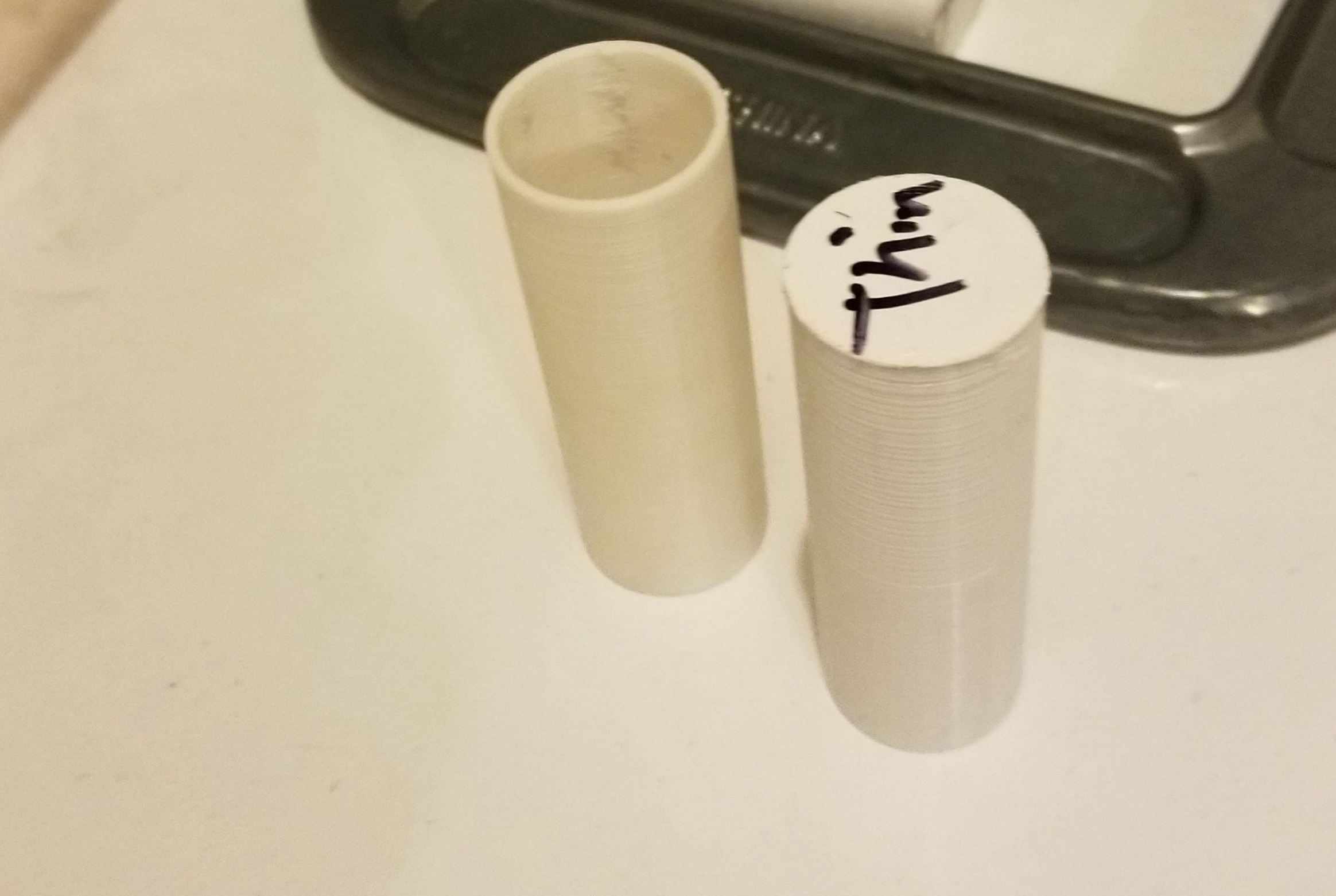How to Set Up The Hammock Stand
The two end segments are placed facing each other about 15 feet apart, then each segment is put together alternating the 3/4" and 1" pieces of conduit. Each segment has five pieces, and the segments are connected together by the lashed together end pieces, and lashed together middle pieces. After all segments are properly assembled, use the ratchet strap between the two middle segments to prevent the sides from sliding apart. Ideal length for the ratchet strap is 6', but can be changed to allow for a better hang. At this point, preemptively put a stake into the ground near the end of each side, and loosely wrap the cordage around the stake, allowing at least 6' of slack. Then, set up the hammock between ends of the hammock stand. A ridgeline is necessary in the hammock for the hammock stand to properly work. Once the hammock is set up between the hammock stand, everything should be mostly in place. All that remains is fine-tuning the cordage on each end and tightening it to the stakes so the hammock stand is even. The hammock stand can be used with only 1 stake or even zero stakes but required proper weight management inside the hammock to prevent yourself from being "Taco'd" between the hammock stand, which is embarrassing and potentially dangerous, so using 2 stakes is ideal!
